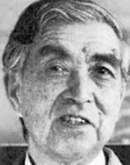BiographyYoshirō Taniguchi was a Japanese modern architect who built more than 50 buildings and 10 monuments. He studied architecture from 1925-29 at the University of Tokyo and taught at the Tokyo Institute of Technology from 1929 to 1965. In the late 1940s, he traveled to Europe, where he created a garden for the Japanese embassy (
A.Speer, 1939-41) and was captivated by classical works of
K.F.Schinkel alongside the international style.
After the end of World War II, he found pure modernism unsuitable for the Japanese environment. However, he attempted to combine several diverse influences that inspired him: traditional forms and crafts of old Japanese architecture, the classicism of ancient Greece that inspired Schinkel, German reductivism applied by Speer, pure aesthetics of the international style embodied by
Le Corbusier and
Mies van der Rohe, and he connected all of this with the most important question: How to build new structures using new materials - steel and concrete - that could create a new city resilient to the major earthquakes that regularly affect Japanese territory.
His work was always in conscious contrast to the works of modernists like
K.Maekawa or
K.Tange, consistently expanding the possible range of the modern architectural vocabulary in Japan. Corbusier and modern architecture influenced Taniguchi, but he also sympathized with classical, particularly Renaissance architecture. Taniguchi's conception of modernism reflected the Meiji era's approach to traditional Japanese culture, according to which Greek classicism could also be considered modern.
In 1952, he became actively involved in the movement to preserve historical monuments and became a member of the Japanese Council of Experts on Cultural Heritage and the Japanese Agency for Cultural Affairs.
One of his less-known achievements was the establishment in 1965 of the
Meiji-Mura museum, a vast natural area north of Nagoya dedicated to the reconstruction and preservation of Japanese historical buildings and modern works, including the Imperial Hotel (
F.L.Wright, 1917-23), which was demolished in 1968 and carefully reconstructed under Taniguchi's guidance in Meiji Mura, piece by piece.
His son
Yoshio Taniguchi was also an architect, with significant projects including the extension of the Museum of Modern Art in New York.
The English translation is powered by AI tool. Switch to Czech to view the original text source.

